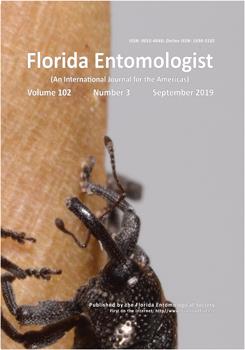A Guide to Native Bees of Australia is more than just an identification handbook on the native bees of Australia; it is also a good reference for anyone interested in learning more about native bees anywhere. It is separated up into 2 parts. The first part, “Overview of bees and their biology,” covers 85 pages (i.e., roughly one-third of the book) and provides a thorough summary of all basic bee information. While this portion focuses on Australian bees, it is a great introduction for anyone who is interested in learning about bees in general. This part is divided into 22 sections that comprehensively provide an overview of a wide variety of bee related topics. These sections, which average about 4 pages, review their biology, morphology, evolution, reproduction, and nesting behavior, as well as how to collect and preserve them, and how to encourage bee habitat. While other books and articles may provide much more information on each of these topics, Dr. Houston does a wonderful job summarizing this information in a fashion that is very enjoyable to read.
The second part, “Identification of Bees,” encompasses the vast majority of the book, and is particularly useful for amateur entomologists and researchers who are interested in genus level identification of Australian bees. This portion definitely will not serve as a field guide, and thus a dissecting scope is encouraged to identify specimens. Identification starts with detecting if the bee is short-tongued or long-tongued, with reference to photographic figures in the first part of the book. A table is provided for identifying the bee to 1 of the 5 families present in Australia (i.e., Colletidae, Stenotritidae, Halictidae, Megachilidae, and Apidae). Once the family has been identified, the reader may go to the associated section for that bee family and use a dichotomous key to get to subfamily and genera. Bees may be identified to 1 of the 58 genera of described bees within Australia. Background information on the range, nesting activity, and habitat is provided for many of the mentioned taxa. In addition, there is a section on the 6 non-native bees introduced to Australia that readers may come across.
Dr. Houston's vast knowledge and experience can be seen in this wonderfully written and organized book. While I personally have no experience in identifying bees of Australia, the background information provided throughout the book is something that would help any level of amateur bee enthusiast, even to advanced bee researchers. I found myself reading many sections of the “Overview of bees and their biology” portion of the book and wishing I had had this book many years ago. It simplifies so many bee related topics which took me much time and effort throughout my course of study to better understand. Beside the entire first portion of the book, I appreciated that within the glossary there are referenced figures designating the associated body part. This can be very helpful when trying to determine specific anatomical parts when an electronic version is not always available. Additionally, for those readers interested in reading more about the bees of Australia, the author offers further print and reputable online resources to guide them, which is essential in this field.
One cannot browse through the book without being impressed by the 550+ photographs of bees, body parts, life stages, and nests, which are wonderfully presented and demonstrate the immense diversity of Australia's bees. These photographs are so numerous that this book could be placed on a coffee table for leisure viewing for the photos alone. Merging this visual appeal with Dr. Houston's expertise creates an essential book for anyone interested in Australian bees.





